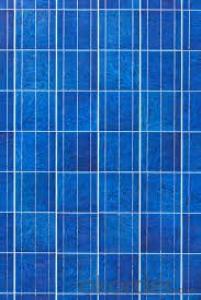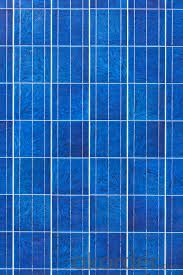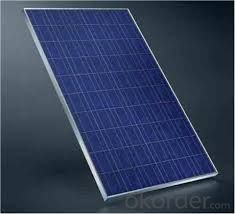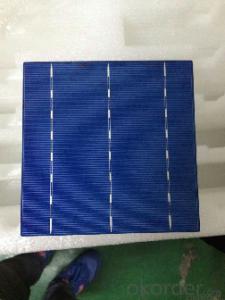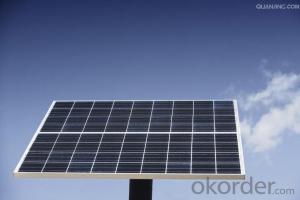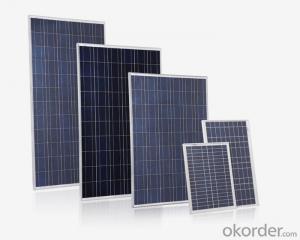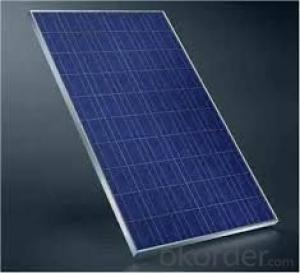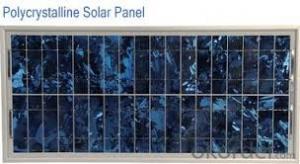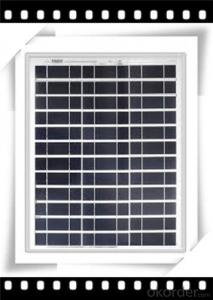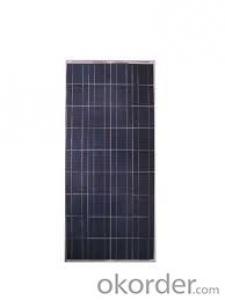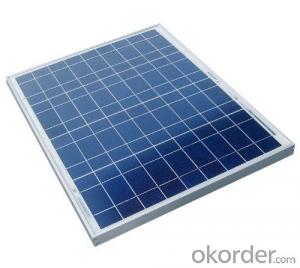4.0 Solar Cells Mini 0.45w Poly Solar Panel with 25 Years Warranty CNBM
- Loading Port:
- Qingdao
- Payment Terms:
- TT OR LC
- Min Order Qty:
- 10 set
- Supply Capability:
- 300000 set/month
OKorder Service Pledge
OKorder Financial Service
You Might Also Like
Polycrystalline Solar Modules
CNBM offers a range of small, medium and large polycrystalline solar modules, designed for a range of requirements.
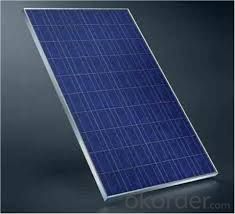
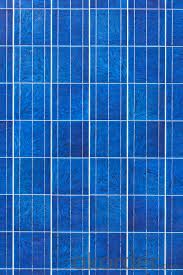
Specifications:
Tolerance | +/-3% |
Cell | Polycrystalline silicon solar cells (156 x 156mm) |
N0. of Cells | 60 (10 x 6) |
Dimension of Modules (mm) | 1650 x 990 x 40 |
Weight (kg) | 25.5 |
Limits:
Operating Temperature | -40~+85? |
Storage Temperature | -40~+85? |
Maximum System Voltage | 1000 VDC max. |
Hail Impact | Diameter of 28mm with impact speed |
Temperature and Coefficients:
NOCT | 48C+/-2? |
Voltage temperature coefficient (%/K) | -0.35 |
Current temperature coefficient (%/K) | 0.05 |
Power temperature coefficient (%/K) | -0.45 |
Characteristics:
Model: | SGM-200P | SGM-210P | SGM-220P |
Max-power voltage Vmp (V) | 29.2 | 29.4 | 29.41 |
Max-power current Imp (A) | 6.85 | 7.14 | 7.48 |
Open-circuit voltage Voc (V) | 36.5 | 36.69 | 36.9 |
Short-Circuit Current Isc (A) | 7.28 | 7.6 | 7.93 |
Max-power Pm(W) | 200 | 210 | 220 |
Model: | SGM-230P |
Max-power voltage Vmp (V) | 29.8 |
Max-power current Imp (A) | 7.72 |
Open-circuit voltage Voc (V) | 37.31 |
Short-Circuit Current Isc (A) | 8.19 |
Max-power Pm(W) | 230 |
STC: Irradiance 1000W/m2, module temperature 25?, AM-=1.5
Poly Crystalline Solar Panels Specifications Range
Maximum Power (Pm) | Dimension | Weight | Operating Voltage (Vmp) | Operating Current (Imp) | Open Circuit Voltage (Voc) | Short Circuit Current (Isc) |
0.45W | 140x80x10mm | 0.08kg | 3.3V | 150mA | 4.6V | 160mA |
1.0W | 162x140x10mm | 0.16kg | 7.5V | 150mA | 10.3V | 160mA |
4.5W | 269x251x23mm | 0.8kg | 16.5V | 0.27A | 20.5V | 0.3A |
10W | 420.1×268.9×22.6mm | 1.92kg | 17.5V | 0.58A | 20.5V | 0.6A |
20W | 425x502x50mm | 3.0kg | 16.8V | 1.19A | 21.0V | 1.29A |
30W | 593x502x22.6mm | 3.9kg | 16.8V | 1.78A | 21.0V | 1.94A |
40W | 655x537x50mm | 5.75kg | 17.3V | 2.31A | 22.1V | 2.54A |
50W | 839x537x50mm | 6.0kg | 17.5V | 2.9A | 21.8V | 3.17A |
65W | 1111x502x50mm | 7.2kg | 17.6V | 3.69A | 22.1V | 3.99A |
80W | 1204x537x50mm | 7.7kg | 17.6V | 4.55A | 22.1V | 4.8A |
- Q: 24V 200W solar cells can charge 12V battery?
- According to your battery and wiring box to see the line, 1 feet corresponding to 2,3,4 feet voltage is 12V, 24V, 36V, if the box in the line, you can choose from 1,3 out, but this is the All the way the battery is in a state of idle, a little waste Oh. It is best to use a 24V controller, which is more efficient.
- Q: What do the solar cell suppliers provide once we purchase the order from the solar cells from them.
- There is a technical term called turnkey project, which is somehow the solar cell suppliers will provide more than selling the solar cells to you.
- Q: How to make solar cells in a scientific way?
- Follow the scientific instructions, then you will learn how to make it.
- Q: How do solar cells affect the grid?
- Solar cells affect the grid by generating electricity from sunlight and feeding it into the grid. This has the potential to reduce the demand for electricity from traditional sources, lower carbon emissions, and contribute to a more sustainable and decentralized energy system. However, the intermittent nature of solar power can also pose challenges for grid stability and require the integration of energy storage and smart grid technologies.
- Q: Can solar cells be integrated into building materials?
- Yes, solar cells can be integrated into building materials. Building-integrated photovoltaics (BIPV) is a growing trend where solar cells are embedded into roofing materials, windows, facades, and other building components. This integration allows for the generation of electricity while maintaining the aesthetics and functionality of the building.
- Q: Are solar cells recyclable?
- Yes, solar cells are recyclable.
- Q: How can solar cells be used in residential applications?
- Solar cells can be used in residential applications by installing them on rooftops or in open spaces to harness sunlight and convert it into electricity. This electricity can then be used to power various household appliances and lighting systems, reducing reliance on traditional energy sources and potentially lowering electricity bills. Additionally, excess electricity generated by solar cells can be stored in batteries or fed back into the grid, further promoting sustainability and energy independence for residential properties.
- Q: What is the payback period for solar cell installations?
- The payback period for solar cell installations varies depending on factors such as the cost of the installation, the amount of energy generated and consumed, and any applicable incentives or subsidies. On average, it can range from 5 to 10 years, but it is important to conduct a specific analysis considering individual circumstances to determine the accurate payback period for a given solar cell installation.
- Q: What are the different sizes of solar cells?
- Solar cells come in various sizes, ranging from small compact designs used in portable devices like calculators and watches to larger panels used on rooftops or in solar farms. The size of a solar cell depends on its intended application and power requirements.
- Q: Can solar cells be used in charging electric bikes?
- Yes, solar cells can be used to charge electric bikes. Solar panels are capable of converting sunlight into electricity, which can then be used to charge the batteries of electric bikes. This allows for a sustainable and environmentally friendly way of powering electric bikes.
Send your message to us
4.0 Solar Cells Mini 0.45w Poly Solar Panel with 25 Years Warranty CNBM
- Loading Port:
- Qingdao
- Payment Terms:
- TT OR LC
- Min Order Qty:
- 10 set
- Supply Capability:
- 300000 set/month
OKorder Service Pledge
OKorder Financial Service
Similar products
Hot products
Hot Searches
Related keywords
